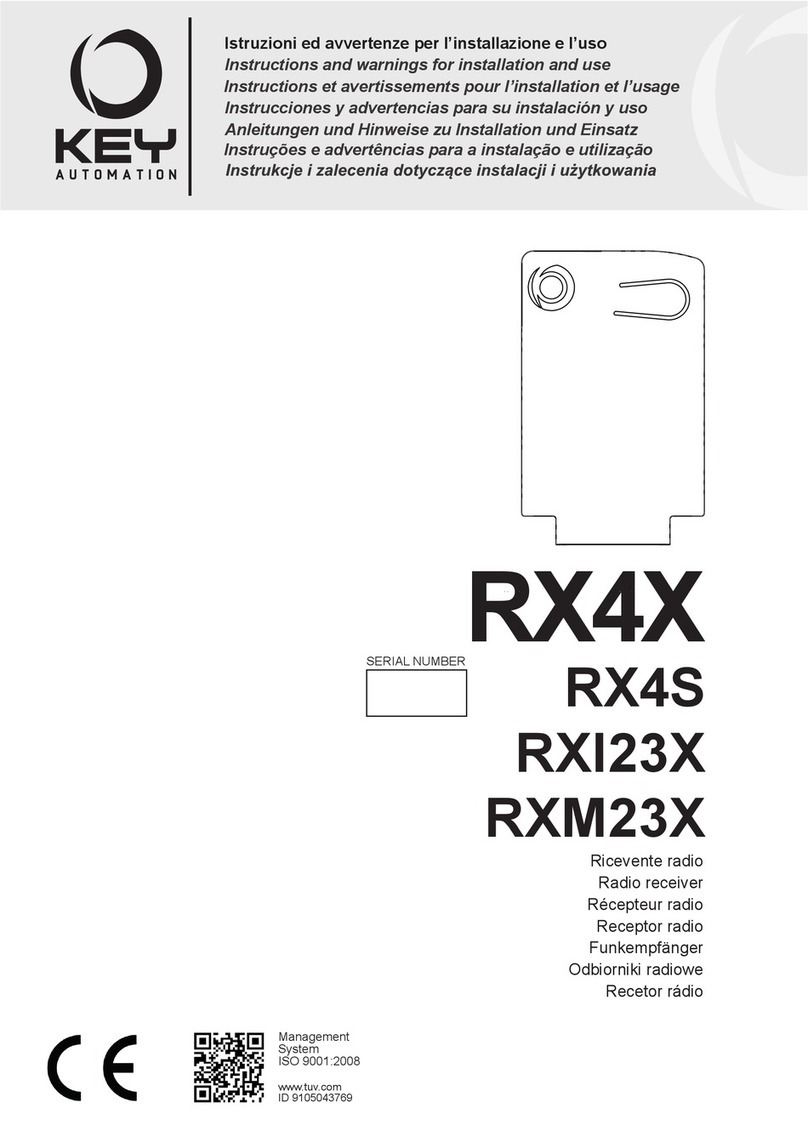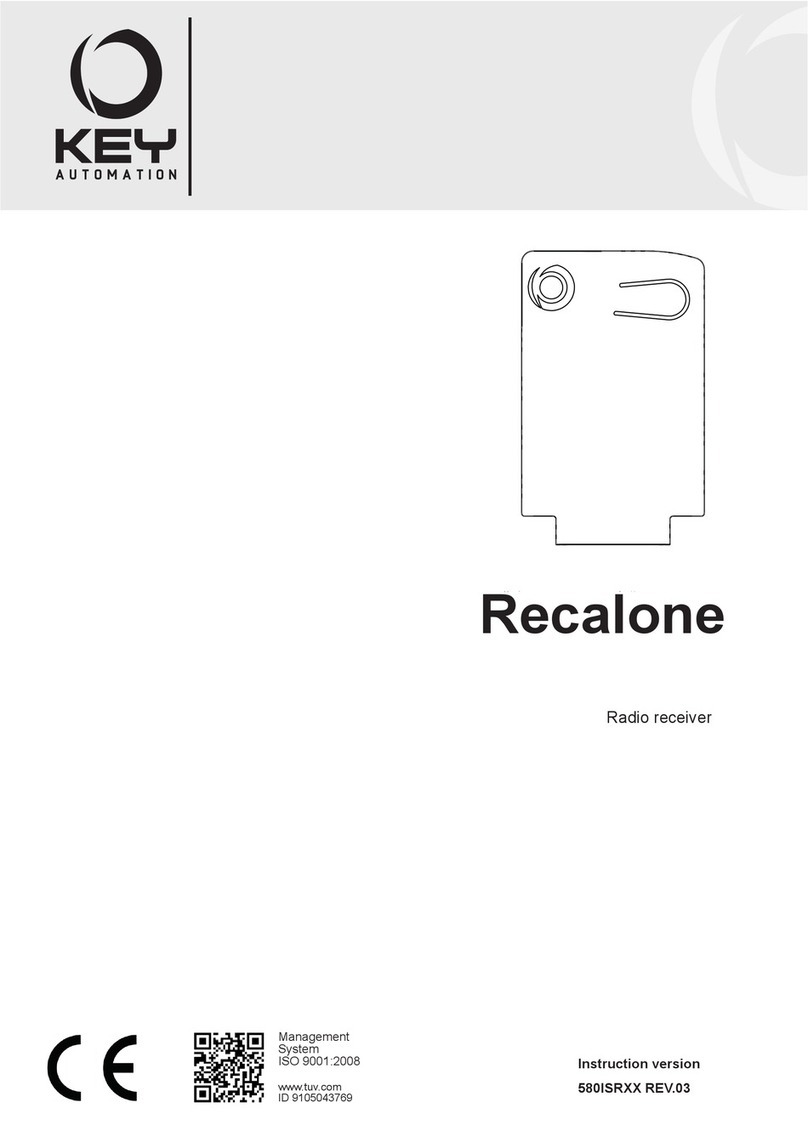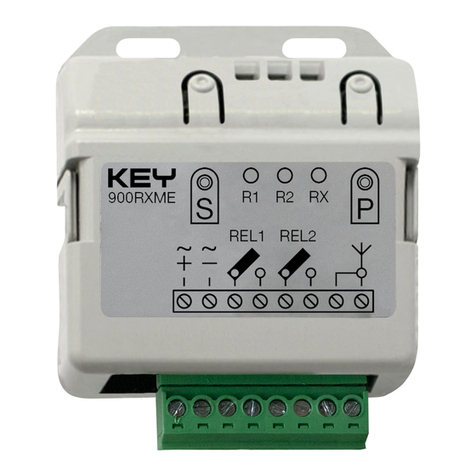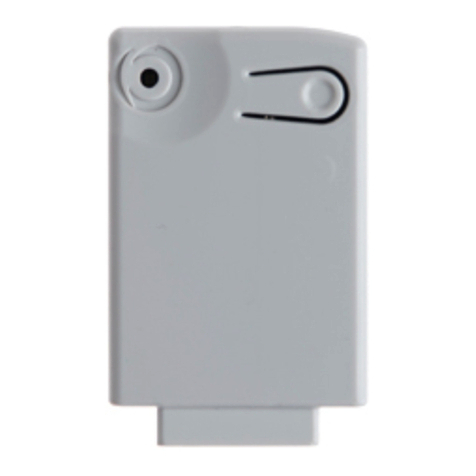
4
ITALIANO
RESET
Se viene data alimentazione e contemporaneamente si tiene premuto per 10 sec. il pulsante di
programmazione Psi ha la possibilità di cancellare totalmente la memoria dell’integrato.
Superati 10 secondi i led LR1, LR2 si accenderanno in sequenza uno dopo l’altro per 1 min. ad
indicare il trascorrere del tempo necessario per eseguire il reset completo della memoria.
N.B. Nei ricevitori RXM-41 - RXM-41R ed RXI-41 - RXI-41R, mancando il led LR2 (che aiuta visi-
vamente a capire quando si è entrati nella fase di reset), bisognerà porre maggiore attenzione a far
trascorrere i 10 sec. necessari per resettare la scheda.
CANCELLAZIONE DI UN CODICE
Es: un primo utente può memorizzare il 1° canale del proprio radiocomando, nell’uscita Out1 del
ricevitore, un secondo utente può memorizzare il 2°, 3° o 4° canale del proprio
radiocomando,nella stessa uscita Out1 dello stesso ricevitore.
Premendo il pulsante Pe successivamente il pulsante S si entra il cancellazione, i led LR1 LR2
emetteranno delle serie di doppi lampeggi veloci per 10 sec. In questo periodo, premendo con il
radiocomando, si ha la possibilità di cancellare il codice dalla memoria. Se la cancellazione è
andata a buon ne i led LR1 LR2 si accenderanno a luce ssa per 2 sec.
A differenza della fase di inserimento codice, nella cancellazione, appena si è cancellato il codice,
automaticamente il ricevitore esce da questa fase. Per cancellare un altro codice si deve pertanto
ripetere la manovra dall’inizio.
N.B. Con la cancellazione si elimina dalla memoria del ricevitore il codice di quel radiocomando,
con tutti i suoi canali (se memorizzati).
Se per esempio la cancellazione viene fatta con il canale 1 di un radiocomando, automaticamente
vengono cancellati anche il 2-3 e 4.
AUTOAPPRENDIMENTO CODICE VIA RADIO SOLO PER
RXI-41 – RXI-42 – RXM-41 – RXM-42 – RXM230-42
Esiste la possibilità di fare l’autoapprendimento del codice via radio, seguendo una sequenza
prestabilita. Con questa sequenza si può memorizzare un nuovo radiocomando avendone uno già
memorizzato.
FASE 1 Premere per almeno 15 secondi consecutivi con un radiocomando già memorizzato.
FASE 2 Premere per una volta con il radiocomando che si vuole memorizzare (entro un tem-
po massimo d’ulteriori 10 secondi).
Se la sequenza è effettuata correttamente la memorizzazione è fatta.
Il ricevitore esce automaticamente dalla programmazione via radio:
- appena superato (durante la fase 2) il tempo massimo di 10 sec. senza che arrivi nessun coman-
do
- al momento in cui viene memorizzato un nuovo radiocomando.
Nel caso si voglia memorizzare più di un radiocomando bisogna ripetere la sequenza prestabilita
ogni volta.
Il microcontrollore è in grado di riconoscere il radiocomando già memorizzato sapendo su quale
uscita e che tipo di memorizzazione ha (monostabile, bistabile, temporizzata, ON-OFF) in modo da
poter collocare il nuovo radiocomando sulla stessa uscita e con lo stesso tipo di programmazione.
E.S.: Nel radiocomando A è memorizzato il 2° canale sull’uscita Out 2 come Passo/Passo,
nel nuovo radiocomando si potrà memorizzare via radio indifferentemente il 1°, 2°, 3°o 4° canale
nella stessa uscita del radiocomando A Out 2 e con la stessa selezione Passo/Passo.



































